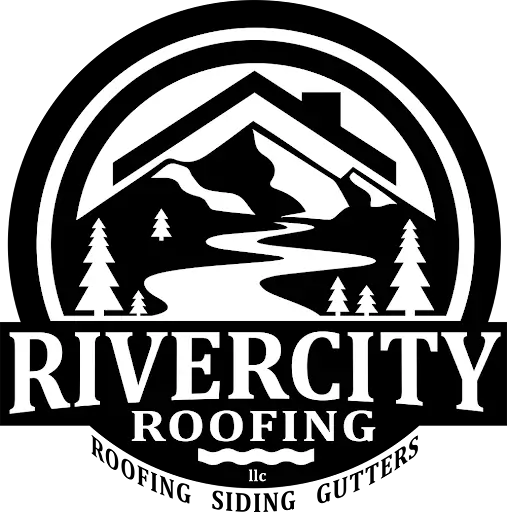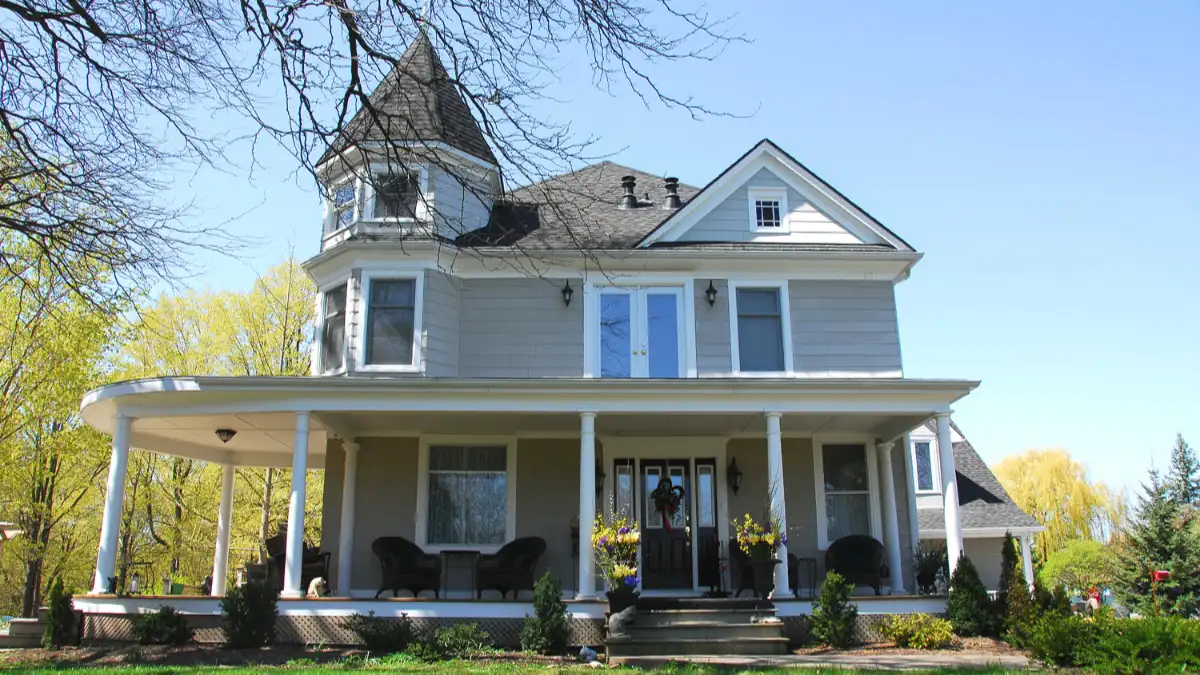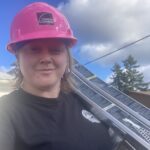Historic homes are the types of houses that many people dream about owning. These buildings embody the architectural beauty and craftsmanship of a bygone era, making them irreplaceable treasures. They are filled with history and beauty that cannot be replicated anymore. But then again, owning a historic home is more than just a dream. Restoring and renovating it comes with its own set of challenges, especially selecting the right roof construction material or repair techniques. The roofs in historic houses are some of the most important parts of their visual appeal as well as structural integrity, which is why the historic home roofing materials should be selected carefully if the historic character of the house is to be retained.
In this guide, you will find all the important aspects of how to make wise decisions on the roofing materials for your Historic Home. First, we will look at the different types of historic roofs, the kind of materials used in traditional historic roofing and the most important factors to bear in mind when restoring or replacing a historic roof.
Why Your Roof Matters for Historic Homes
A building’s roof is arguably the most striking attribute, and on any historic structure, it greatly contributes to the overall style of architecture. Roofing materials of earlier times have unfortunately become rare in today’s generation, thanks to materials like wood shingles, slate or clay tiles. Moreover, roof designs of the past were elaborate and characterized with detail, which also increased the work of preservation and restoration. Improperly selected modern roof materials, styles and techniques can reduce the worth and the appearance of your historic house, whereas correct restoration or replacement will maintain its value for ages. Irrespective of the restoration, repair, or full-blown replacement, the first step is to understand the different historic roof styles and the right materials to use.
Key Considerations for Historic Home Roofing
A roofing material or contractor for a historic property cannot just be chosen without considering the following crucial factors.
Historical Accuracy: The selected roof should fit the period of the house accurately and correctly. There may be local laws/codes and preservation rules that stipulate what kind of materials one can use.
Durability and Longevity: While the importance of preserving the historical significance of the structure cannot be overstated, the roof should perform its job of protecting against weather elements and be maintenance-friendly.
Cost and Availability: Some of the conventional historical waterproofing elements may be overpriced or quite hard to find in the market. Nonetheless, contemporary materials that mimic historic looks may be relatively cheaper.
Local Climate: Also, inquire about the climate of the region as that may determine how well a certain material performs and the durability of the roofing materials.
Preservation Guidelines: Most of the historic districts have restrictions on renovations and reconstructions. In all likelihood, you will have to reach out to some local preservation societies or ruling authorities.
Free Roof Inspections. Fast. Reliable.
Is your roof ready to weather the storm? Dont risk property damage. Our free roof inspections provide expert analysis to identify potential issues before they become costly problems.
Common Historic Roof Types and Their Materials
When assessing the types of roof structures for historic homes, the period of the construction of the home will primarily dictate the design of the roof. Let us focus on discovering more about the prevalent historic roof types and the types of materials used in every case.
Gable Roofs
Among the different types of roofing, gable roofing is the simplest and the most common roof type, and it is widely used in historic homes. In this type of roof, two diagonally sloping sides meet at the ridge, forming a triangular shape. Gable roofs are primarily found in homes made in these periods: Colonial, Federal, and Greek Revival.
Historic Roofing Materials: Gable roofs were almost universally roofed with wood shingles or slate, depending on the respective regions and time periods.
Restoration Tip: In case your house was originally roofed in wood shingles, we suggest you consider using cedar shakes, which will give more or less the same visual effect as wood shakes but will last longer and will be less prone to decay.
Hip Roofs
A hip roof has a sloping surface on all four sides, making it more solid and resistant to winds than a gable roof. Such roofing has been widely used in many homes since the Georgian, Victorian, and Arts and Crafts eras.
Historic Roofing Materials: Such roofs would mostly include slate and wood shingle or clay tile roofs. Sometimes, metal roofing was also incorporated, especially in high-end houses.
Restoration Tip: Slate and clay tiles are great but expensive and appealing. If there is a cost issue, go for the cheaper synthetic slate or clay tile look-alike to keep the historic appearance intact.
Mansard Roofs
The decorative features of the mansard roofs give great significance to their prominence during the Second Empire and the Beaux-Arts architectural stylistics. These roofs feature slopes that descend sharply, almost vertically, and flat or slightly pitched upper sections. Such roofs very often create an additional space for habitation, which is usually referred to as an attic or a garret.
Historic Roofing Materials: The predominant roofing material used in the construction of a mansard roof was slate or metal, with steep sections of the roof often fitted with decorative ornate dormer windows.
Restoration Tip: If your mansard roof features slate, then it is vital to ensure that the slate restored has the same shade and contour as the original slate. Should the original material be extremely costly, modern synthetic alternatives to slate are offered.
Gambrel Roofs
Gambrel roofs exhibit characteristics that are akin to a mansard roof but only feature two sides, unlike a mansard roof, which features four slopes. These types of roofs are more renowned and popularized with Dutch Colonial houses and Colonial Revival styles. The advantage of the design is that the attic space has more headroom.
Historic Roofing Materials: Wooden shingles or slates were most often used on gambrel roofs, and they commonly included embellishments, such as a cupola or dormers.
Restoration Tip: If restoring a gambrel roof, choose wood shingles that are not only durable but also fire-resistant. Also, restore any dormers or other design elements to their original state.
Flat Roofs
The early 20th century saw increased adoption of flat roofs mainly due to the influence of the Prairie and Art Deco building styles. Although they are more prominent in commercial structures, fully horizontal rooftops can also be found in the design of historic residences with a modernist twist.
Historic Roofing Materials: Previously, flat roofs were made with materials including tar, gravel, or copper. Lead or Zinc panels were used since they are waterproof.
Restoration Tip: Economical replacement methods are available to enhance the historical appearance by installing modern flat roof elements like TPO or EPDM-type membranes.
Traditional Historic Roofing Materials
A detailed understanding of historic roofing types, assisted by contemporary knowledge of materials, will go a long way towards ensuring proper restoration concerning authenticity. Here are some examples of materials generally used in historic roofing and their modern-day substitutes.
1. Slate
For ages, slate has remained one of the most preferred roofing types due to its robustness, non-flammability, and attractive looks. It can be found in houses designed in the 18th and 19th centuries and is often associated with expensive and elegant houses.
Advantages: Slate roofs can last for one hundred years and even exceed this age with proper care. They are also naturally fire, mold and insect resistant.
Drawbacks: Slate is very heavyweight and expensive, thus, not all modern dwellings are designed structurally to carry such weight. In addition to this, skilled craftsmanship is a requisite for fixing the materials, hence increasing costs.
Modern Alternatives: Lighter and cheaper synthesized slate shingles, which are made from recycled materials, are a good substitute for natural slate shingles, although they still look like natural slate shingles.
2. Wood Shingles and Shakes
Previously, wood-shingled and wood-shake houses were commonly present, particularly in the Colonial, Georgian and Federal styles of architecture. Wood gives a warm and natural finish, elegantly complementing traditional architecture.
Advantages: Wood shingles provide good thermal resistance and are biodegradable. Cedar and redwood have insect and rot resistance properties by nature.
Drawbacks: Wood shingles are flammable and require frequent maintenance to ensure they do not rot or decay in places with wet climates. Nowadays, fire-retardant applications can be used but can further increase prices.
Modern Alternatives: Composite or fibre-cement shingles provide a wood façade, but they are more durable and fire-retardant.
3. Clay Tiles
Clay is one of the most ancient roofing materials that can be dated back to the old civilizations. Their use was more pronounced in the Mediterranean and Spanish Colonial Revival styles of architecture as they brought beauty to houses.
Advantages: Clay tiles are durable, fire-resistant and save energy. They can survive over 50 years with the right maintenance.
Drawbacks: Clay tiles, like slate, are heavy and require substantial structural support. They may also prove quite expensive, especially for custom colours or designs.
Modern Alternatives: Concrete tiles give a traditional look of clay tiles but are less expensive and lighter in weight.
4. Metal Roofing
Historically, metal roofing has been and continues to be associated with centuries of use in historic homes, particularly in the countryside or in an industrial environment. Durable and malleable materials, such as copper, tin, and zinc, were popular choices owing to their workability and durability.
Advantages: Metal roofs are durable, and they can be recycled, as evidenced by some metal roofs that have lasted over a century. Over the years, copper roofing systems have developed a patina enriching the character of historic structures.
Drawbacks: The price of copper and other materials can be high, and skilled craftsmen are required to do the job. Metal roofs have some noise-associated disadvantages during rains or hailstorms if not properly insulated.
Modern Alternatives: At a more affordable price and with effective energy-saving properties, steel or aluminium roofing systems can resemble the look of former historic roofs.
5. Asphalt Shingles
Though not regarded as a traditional historic roofing material, asphalt shingles by the 20th century had become a prominent roofing alternative due to their relative affordability and relative ease of installation. They are found in house constructions after the 1920s and represent a viable option for homeowners on a budget.
Advantages: The primary merits of asphalt shingles are that they are comparatively cheap, readily available, and they do not require special training to fix. They are available in varying colours and designs to give the effect of costly materials like slate and wood.
Challenges: It is worth noting that asphalt shingles have a relatively short life expectancy (20 – 30 years) in comparison to other types of materials and may not be suitable in some cases for certain vintage residences.
Modern Alternatives: Architectural or laminated asphalt shingles are thicker and give a more three-dimensional effect and therefore help in attaining a better mimic of olden materials.
Factors to Consider When Choosing Historic Home Roofing
Choosing roofing materials for your historic home is an intensive exercise. Here are some tips to ensure that when you decide to restore or replace your historic roof, you can still align it with your home’s history and your needs.
1. Consider the architectural style: The roofing material needs to be in consonance with the architectural style of the house. For instance, wood shingles might suit a Colonial-styled house more than a Mediterranean-styled house, which would call for clay tiles.
2. Local building regulations: Some jurisdictions have laws particularly about only using certain roofing materials on a historic home. To avoid any problems in the actual installation of the new roof, ensure that all the rules are followed.
3. Budget: Materials like copper and slate that were used historically are expensive. Determine what you are willing to pay for your roofing needs and look for solutions that are within your budget.
4. Environmental Conditions: When considering which roofing material to use, one should take into account the area’s climatic and environmental aspects as well as humidity, snow, and wind.
5. Energy Efficiency: Metal or synthetic slate that is commonly used nowadays offers higher energy efficiency than traditional materials. If you would like to reduce your energy costs, consider these options while maintaining the appearance of your historic home.
Hiring a Contractor for Historic Home Roofing
Hiring a Roofing Contractor who understands the unique challenges of working on historic homes will ensure that your roof is installed correctly and respectfully.
Finding the Perfect Roofing Contractor for restoring your historic roof is of utmost importance. Here are some important points to consider when looking for one:
1. Have you restored other historical buildings before?
2. Do you know the types of roofing that were used in the period when my house was built?
3. Can you give examples of similar work you have done before?
4. Do you hold the requisite licenses and insurance for working on historic houses?
5. Do you engage preservationists, or do you have any contacts with local historical societies?
Ultimately, hiring a contractor who appreciates the difficulties that come with working on historic homes can help ensure that the roof is installed correctly without causing any unnecessary damage.
Conclusion:
Historic houses usually have multiple aspects to consider before the final decisions are made: utility, protection from adverse weather conditions, aesthetic appeal and historical value of the building. No matter how complicated the roof of your historic home may be, the right roofing materials and professional craftsman will ensure that the masterpiece that is your house will be preserved for the upcoming generations.
Looking for Solutions for a Roof Issue on a Historical House? Call River City Roofing Now!

Our particular focus at River City Roofing is on the restoration and replacement of old roofs in historic homes. We are experienced with all types of historic roofs and materials and will make sure that your roof restoration does not compromise the original design beauty of your house.
Reach out to us for an appointment and no-charge roofing inspection!



